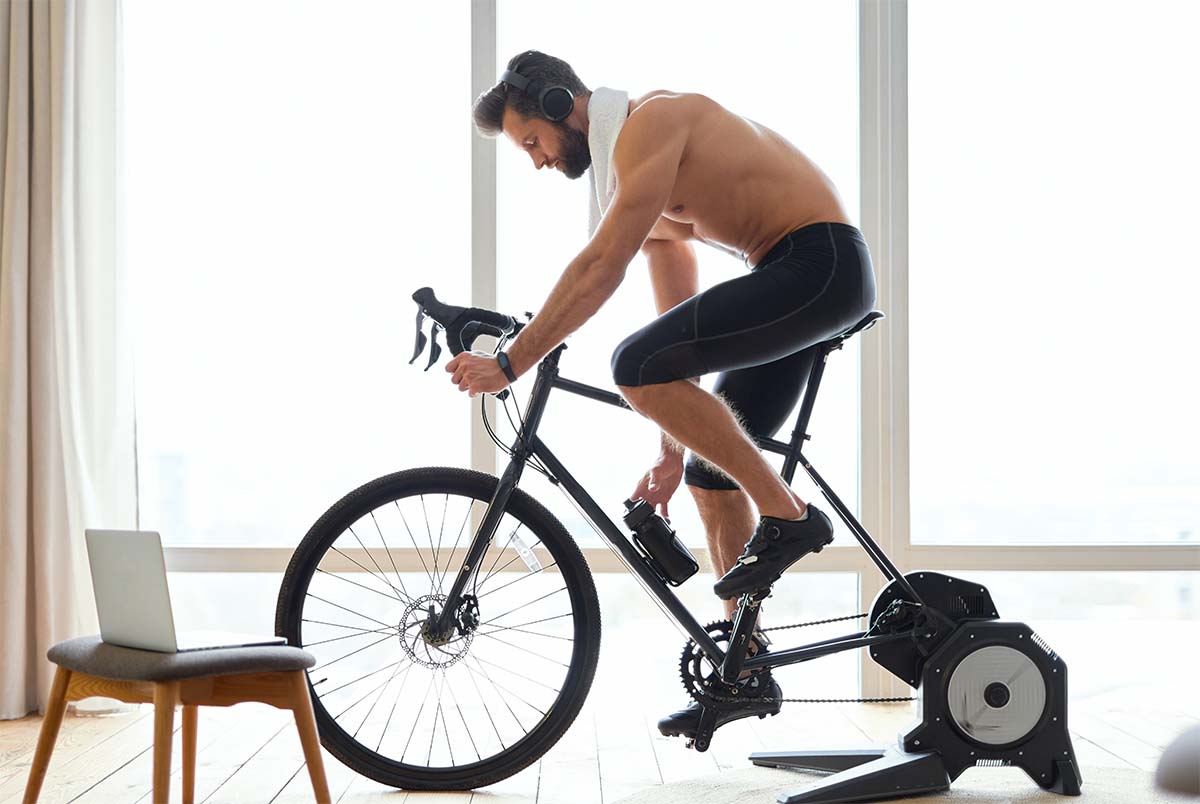Some like it hot: Heat training’s accessible performance gains for cyclists

It’s been compared to altitude training for its capacity to boost cycling performance. And the best thing is, you can do it at home – literally. Have you given heat training a go?
Studies show even a 2-week block of typically home trainer-based, heat training can significantly boost athletic performance regardless of whether target races are in hot or cold climates. (As opposed to heat adaptation which tries to mimic race conditions in training.)
Like altitude training, heat training can boost plasma and associated haemoglobin production in the body, boost heart strength and ultimately deliver more watts for longer. Who doesn’t want those kinds of gains from the comfort of one’s own Turbo cave?
In a 2020 British Journal of Sports Medicine editorial Qatar Orthopaedic and Sports Medicine Hospital-based exercise physiologist and heat training researcher, Sebastian Racinais, noted: “These adaptations contribute to lower the cardiovascular response associated with exercising in the heat and thus improve performance.”
In a 2020 presentation, professor Racinais said performance gains can reach 15%; often exceeding altitude training benefits.
He estimated something like 60%-80% of athletes were incorporating heat training or adaptation into their Tokyo preparation.
Get your heat on: ‘Train hot, race cold’
“Train hot, race cold,” says Chris Blomfield-Brown, someone who has peered deep into the heat training vortex in his role as product manager at CORE, the Swiss firm behind the postage stamp-sized, clip-on core body temperature sensors that have quickly become de rigueur in the pro peloton for both training and live-temp monitoring during racing.
“There’s different ways to get the heat in: closing the windows in a home-training room, wearing warmer clothing, harder efforts,” Blomfield-Brown says.
Tech like CORE gives athletes a tool to maximise the heated conditions by working out an individual’s ‘magic number’ – about 38.5°C for most people – with live readings to help you stay in your bespoke ‘heat zone’ where the greatest benefits can be had.
“So you get up to your heat zone number – your magic number – then you just hold it for 45 minutes to an hour,” Blomfield-Brown says. “Two weeks of this kind of training plus a couple of sessions a week after can deliver real benefits.”
About half the teams in the men’s pro peloton are using it, including Deceuninck-QuickStep, Movistar, Astana-PremierTech and Bora-Hansgrohe have partnerships with CORE, not to mention women’s pro teams like Ceratizit-Wnt and the Norwegian triathlon team which included Tokyo men’s triathlon gold medallist Kristian Blummenfelt. Many others are using it in ‘dark mode’.
Richard Carapaz’s CORE unit could be seen as the Ineos Grenadiers rider raised his arms to take gold at the Mt Fuji racetrack for Ecuador in a super-tough, hot and humid Olympic road race.
How heat training works: Optimising cooling and fuelling
Simply, all that sweating when heat training encourages the body to produce more plasma, which also provokes haemoglobin production.
It is, for this reason, heat training can deliver similar benefits to the red blood cell and associated oxygen processing-boosting benefits of altitude training.
“Once you’ve built up this plasma count you just need to do a couple of sessions a week to keep it,” Blomfield-Brown reckons.
Heat training also helps the body function more efficiently – what’s known as ‘vascular coordination’.
“So the body figures out how to send the right amount of blood to the skin for cooling and still supply blood to the muscles for fuelling. Because your fuelling system and cooling system are intertwined. So if you need cooling it steals from power production and vice versa.”
Loss of power is one of the tell-tale signs of overheating. Unfortunately, the body is not very good at sensing this before it is too late, a physiological fact that has driven the rapid uptake of the CORE sensor. Technology embellishing what is one of the body’s dimmer sensors.
Aside from the performance penalties, overheating can also provoke disastrous health consequences including:
Muscle cramp
Dehydration
Heat exhaustion
Hyponatremia
Heatstroke
Not good obviously, and potent reasons to consider giving heat training a bash. Not to mention, as professor Racinais says, “what could be the difference between the podium and not the podium in normal conditions.”
Why not get yourself an instant online quote for Yellow Jersey’s bicycle insurance, backed up by an award-winning claims service?







